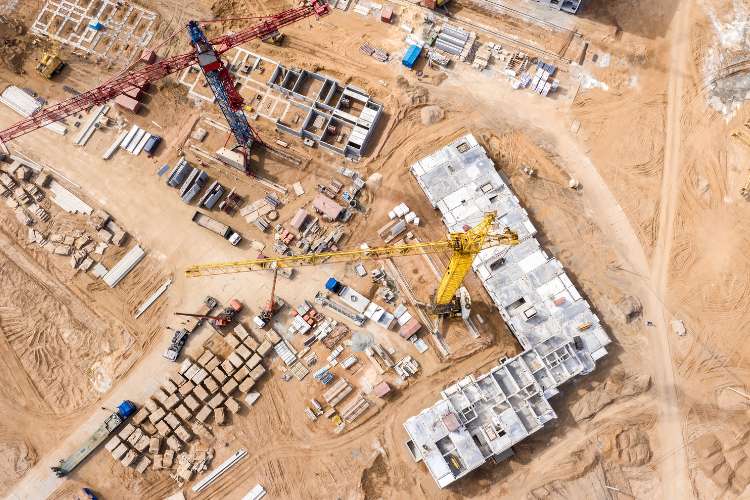Solid accounting is the backbone of a construction business. Your accounting decisions play an important role in shining a bright light on the numbers, which are crucial for maintaining healthy cash flow and a comfortable profit margin. Sloppy accounting can give you an incorrect assessment of profitability and thus could lead to poor financial decisions. Even small bookkeeping mistakes can gravely impact your bottom line.
Subcontractors must follow some basic accounting guidelines, such as understanding construction accounting as it relates to tracking each unique project, when to recognize revenue, and how to account for retainage.
There are more nuanced considerations subcontractors should think about as they maintain their financials, as well. For example, how does material financing or invoice factoring flow into your books? How should full or partial payment upfront to your crew be handled in your accounting system? Below, we walk through several different scenarios.
Table of Contents
What Subs Need To Know About Construction Accounting
In construction accounting, you record revenue and costs against each unique job, which ultimately allows you to track the profitability of each project. In your accounting system, each job is created with a unique code, and revenues and costs are assigned to the project using that code. Most costs are assigned to materials and labor, with some additional costs including project-specific insurance, equipment, or other project-related expenses, as well as soft costs.
Revenue Recognition
There are two common methods for recognizing revenue in construction accounting. The first is the completed contract method, in which revenue is only recognized when the work is completed. This method is used when it’s tough to calculate the percentage of the project completed, when there are inherent barriers that may impact the completion of a project, or when the project is very short-term in nature.
The second, and more common way to recognize revenue, is the percentage of completion method. This method calculates the continuous revenue and expenses related to longer-duration projects, based on how much work has been completed. For this method to work, there must be straightforward ways to assess the percentage of the project completed. Therefore, maintaining an accurate schedule of values is essential.
Accounting For Retainage
Retainage is very common on commercial construction projects, and it’s important to understand how retainage flows into your accounting books. Retainage, once withheld, can be recorded as revenue on the income statement and therefore added as a receivable on the balance sheet. However, if retainage in a contract can be withheld over a year, it may need to be recorded as a long-term asset, as opposed to a short-term receivable. One thing to note: The IRS does allow a company to exclude retainage from revenue recognition (in order to save on income taxes) until an unconditional right to receive it has been established.
Cash Flow and Financing
Cash flow monitoring is a critical aspect of construction accounting, as well. Construction projects can span months or even years, and payments for those projects stretch out across those timeframes, too. If you don’t properly account for the cash you have coming in and going out of your business, you can easily find yourself in a position where you don’t have the ability to pay subcontractors or suppliers or confidently take on new projects.
Materials are a common source of cash flow problems. Subcontractors often have to purchase materials with their own funds, before they receive payment for the work completed. To address this issue, some contractors pursue material financing, so they can acquire the materials they need immediately but spread out payments across several months, or until they’re paid for the work. This allows them to better predict and manage their cash flow.
Billing for Construction Projects
Because construction is project-based and those projects can span long periods of time, subcontractors use a number of billing methods. Below, we explore a few of the most common:
- Progress Billing
Created by the American Institute of Architects (AIA), progress billing is a standardized way to invoice periodically throughout a project, based on the percentage of work completed. For example, you may want to invoice 25% of a project’s contracted amount once you complete 25% of the work. The process involves using official forms produced by the AIA.
When to use it: Progress billing is especially beneficial for large and/or government-funded projects. It is generally most feasible with projects that have defined stages or milestones toward completion.
- Fixed-Price Billing
A fixed-price (or lump-sum) contract is based on a detailed estimate and establishes a total price upfront for an entire construction project.
When to use it: Fixed-price contracts are usually favorable for projects that have a clear scope and defined schedule.
- Unit-Price Billing
This approach uses a fixed price per unit provided (i.e., any predetermined measurement, such as a foot of installed guardrail or a square foot of dirt that is moved).
When to use it: Typically, this is useful when you are not able to estimate the unit production for a project with certainty. Unit-price billing is common among heavy-highway and utility-construction contractors.
- Time-and-Material Billing
Time-and-material billing bases the contract price on a per-hour labor rate plus the cost of materials used. You may choose to apply a standard markup to both the labor and material components to help cover overhead costs.
When to use it: This approach is most beneficial when the entire scope or duration of a project cannot be accurately predetermined or estimated.
Project Payments: Triggers, Restrictions, and Delays
No matter what billing format you use, certain circumstances can trigger, restrict or delay payment for completed work. Here are a few common occurrences that can affect your accounting:
Substantial Completion Can Trigger Payment
Substantial completion is a legal term often used in contracts between project owners and contractors. It refers to when a building can be used for its intended purpose, even if there is minor work remaining and it is not yet 100% complete. Typically, when a project reaches the point of substantial completion, the owner is responsible for paying the contractor or subcontractors the remainder of their contracted fees.
Retainage Can Restrict Payment
Retainage is a practice where a percentage of funds is withheld from a contractor or subcontractor until the project is completed. Typically, 5% to 10% of each progress payment is withheld and then released when the project is complete. Private construction projects often involve higher retainage percentages, while federal, state, and municipal jobs withhold lower amounts.
Change Orders Can Delay Payment
When the scope or schedule of a project changes, subcontractors and contractors use a change order to get approval for the deviation. The change order documents the requested change, proposed updated schedule, and cost of the new work. While change orders are common, they don’t always go smoothly. When the owner or agency takes a long time to process a change order, contractor and subcontractor payments can become delayed — which can disrupt the overall project schedule and impact a contractor’s cash flow and accounting.
Issues Up the Payment Chain Can Cause Payment Delays
A construction project’s payment chain includes all funds flowing from the top (the property owner or lender) down to all project stakeholders, including contractors and subcontractors. The bigger the project, the bigger and more complex the payment chain becomes, as funds must flow down through more and more subcontractors and suppliers.
If an issue occurs near the top of the payment chain, the effects trickle down. If, for example, the general contractor isn’t paid on time, the subcontractors under him will likely experience payment delays as well. The further down the chain you are, the greater your risk of delayed payments. This, in turn, increases the risk of cash-flow interruptions, meaning you must monitor your accounts receivable closely.
With these scenarios in mind, it’s clear that to keep their businesses on track for success and growth into the future, subcontractors must pay close attention to their accounting processes.
Construction Accounting Tools
When researching and evaluating construction accounting tools, look for the following features and capabilities:
- Job costing: Job costing functions generally cover project cash flow, budget management, and the ability to compare estimated and actual costs.
- Revenue recognition: This functionality allows you to recognize revenue based on how much of the job has been completed.
- Billing: Ideally, construction accounting tools will include functionality for several different types of billing, as discussed above.
- Retainage: Because retainage isn’t invoiced the same way as other billing, your software must be able to keep it separate from other receivables.
- Payroll: If you employ other subcontractors, a payroll feature can enable you to better track wages, taxes, and other labor costs. A software like Trayd can help you automate payroll.
- Integrations: Your software should have the ability to integrate with other construction software, such as project management solutions, estimating software, or a CRM.
There are many construction accounting tools and solutions available. Some of the most popular systems include:
- CMiC: CMiC is a comprehensive construction accounting solution that includes features such as budgeting, project forecasting, general ledger, accounts payable, and more. It also provides robust reporting capabilities, so you can thoroughly understand project costs, risks, and profitability.
- Foundation: Another construction-specific accounting tool, Foundation is ideal for businesses of all sizes. It comes equipped with modules including job costing, payroll, purchase order management, general ledger, and more.
- Sage: Sage offers several different construction accounting products, including Sage 300 CRE for midsize and large construction firms, as well as Sage 100 Contractor for small and medium-sized businesses.
- Quickbooks: While Quickbooks doesn’t offer a product specific to accounting, it is recognized as a great option for small contractors. It offers many of the capabilities that contractors need, such as tracking project profitability and batching bills, as well as add-ons like payroll.
To accurately understand the financial status of their business, subcontractors must establish construction accounting processes that account for revenue, retainage, cash flow, billing, and more. When you have a comprehensive understanding of your financial standing, you can confidently take on new projects and grow your business.







